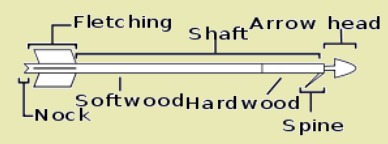Fletching Basics
|
An arrow is a shafted projectile that is shot with a bow. It predates recorded history and is common to most cultures. An arrow usually consists of a shaft with an arrowhead attached to the front end, with fletchings and a nock at the other. Today, most arrows are between 28" and 36" in length with the mean being between 30-32".
The Shaft is the primary structural element of the arrow, to which the other components are attached. Traditional arrow shafts are made from lightweight wood. Today many arrows are made with wooden dowels. Fletching refers collectively to the fins or vanes, each of which individually is known as a fletch. Traditionally, the fletching consists of three matched half-feathers attached near the back of the arrow or dart's shaft that are equally spaced around its circumference. Four fletchings have also been used historically.
Today, modern plastics may be used instead. Fletches were traditionally attached with glue and silk thread, but with modern glues thread is no longer necessary unless the arrow is a reproduction of a medieval war arrow. The fletching is used to stabilize the arrow aerodynamically. Of course the traditional fletching for arrows is a split feather, called a vane, which is glued and or tied to the arrow shaft. Almost any feather will do if it is large enough. Native Americans used the feathers of eagles, hawks, owls, and turkeys. The English preferred goose feathers. These days, most primitive archers use turkey feathers for fletchings. Eagle, hawk, and owl feathers can get you into serious trouble with the law, so stick with turkey or goose feathers.
Feather fletches impart a
natural spin on an arrow due to the rough and smooth sides of a
feather and the natural curve, determined by which wing the feather
came from. It has been said that right handed shooters (those
that shoot arrows on the left side of the bow) shoot left wing
feathers the best.
Most any feather that is tall enough will work as a fletching, however, some work better. Primary wing feathers, the 8-10 feathers on the end of the wing, work the best. Vanes need to be placed at a slight angle to create the same effect, but all are there to impart stability to the projectile to ensure that the projectile does not tumble during flight. The Nock is a notch in the rearmost end of the arrow. Additional Resource Links: Fletching By Hand Making Arrow Fletchings from Whole Feathers The Feathers Finishing the shafts Hand Fletching Wood Arrows Making Bow Strings: Making A Flemish Braid Bowstring
|
| Making Fletching (Vane) Steps | |
| On the front of the feather the quill is rounded. |
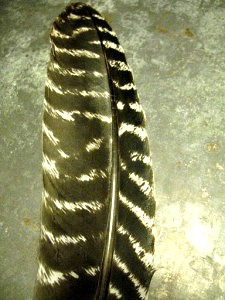 |
| On the back of the feather the quill has a groove down the center. |
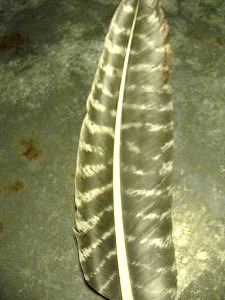 |
| Turn feather back
so the 'front' side is up. Scrape the 'crown' with a sharp knife held at 90* till you scrape thru it to the 'pith'. Tap the crown with knife handle and turn over and tap along the back. |
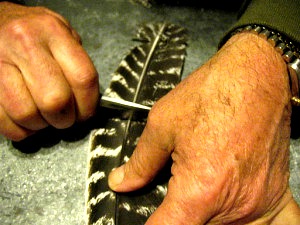 |
| If necessary use tip of knife to start splitting the feather. |
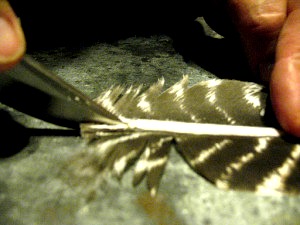 |
| Separate the halves into two vanes. |
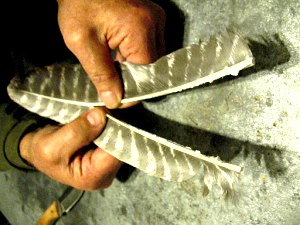 |
| The quill part of
the fletching will probably be thicker than you want. Fix this by scrapping with your knife... |
 |
| or rubbing gently with sandpaper. |
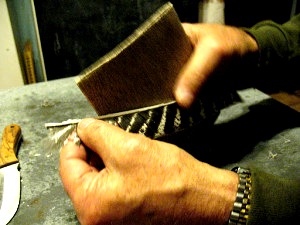 |
| Trim [roughly] to
shape... Trim away about 3/4" of the feather away on each end retaining the quill stem. |
 |
| Mounting Fletching/Vanes | |
| Arrow shaft with Nock and 3 prepared Vanes. |
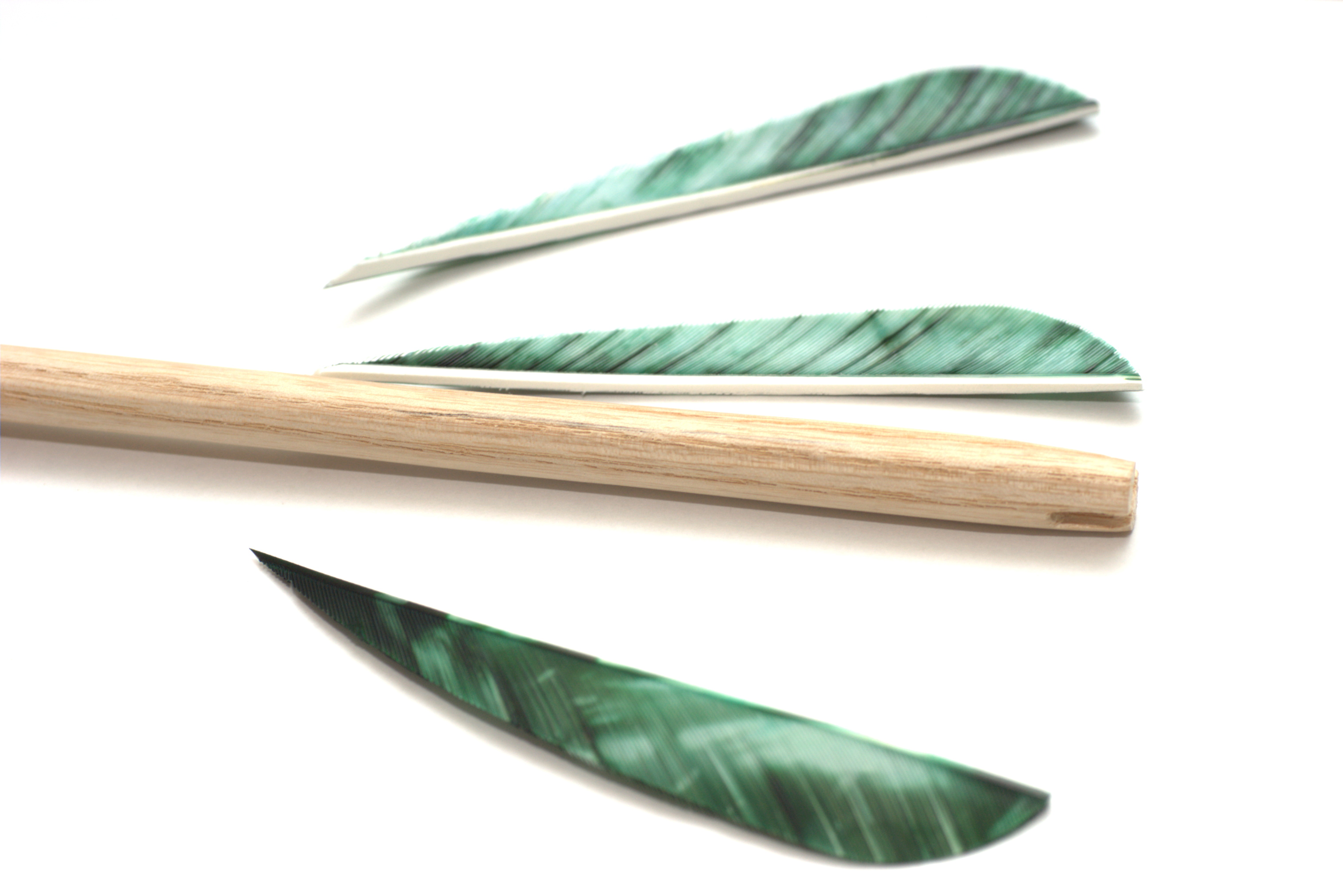 |
Mark 3 dots 120* apart around shaft. If you mark your shaft at the "horizon" of the shaft at each end, that will be approximately 120 degrees. Do that twice, from either end of the cock feather mark, and you should have split the shaft into thirds, each mark 120 degrees from the next. |
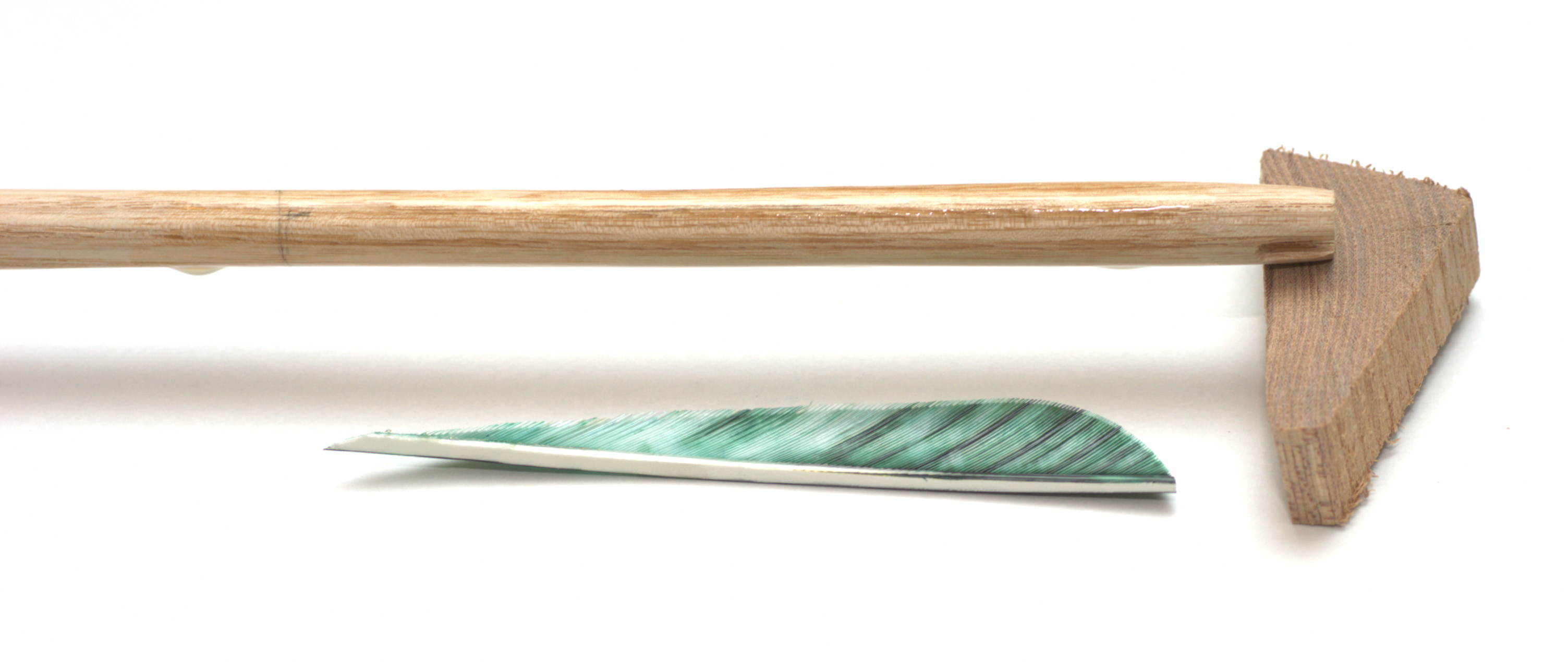 |
Put light bead of adhesive on Vane. Place front on first mark and then align rear with minimum twist. Raise nock end on a spacer block. This is known as the 'Cock' feather. |
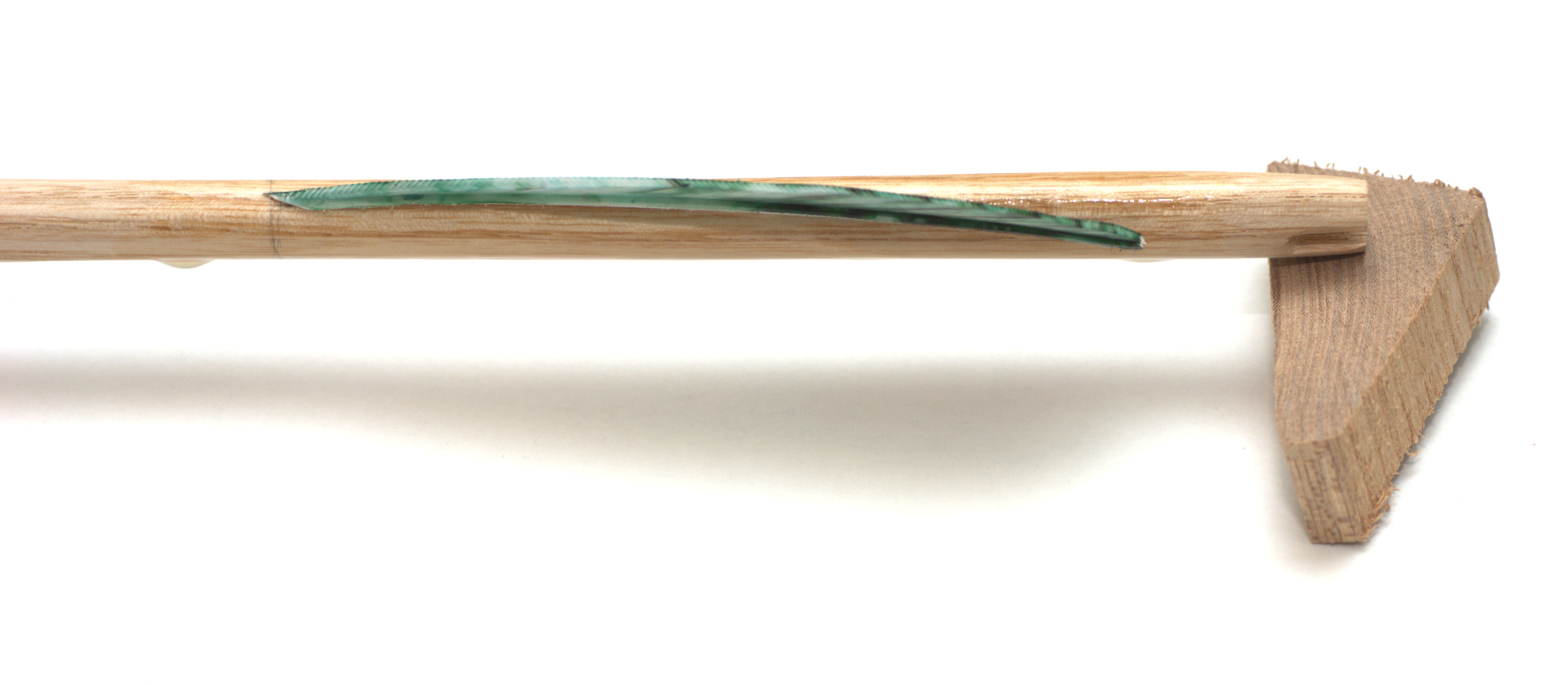 |
| Rotate arrow 120* Place next (2nd) vane the same way. 1st 'Hen feather' |
 |
Repeat previous step with 3rd Vane. 2nd 'Hen feather' Verify that your alignments are all the same! |
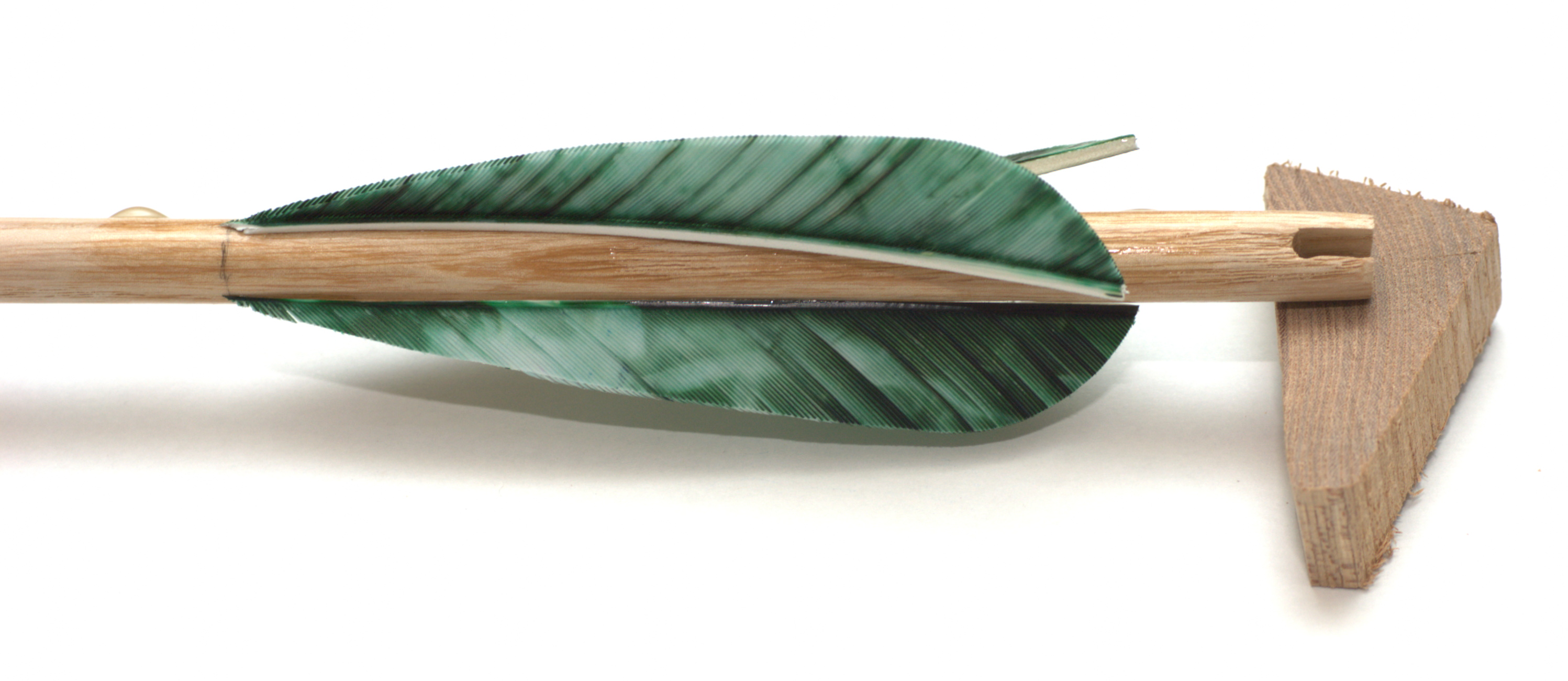 |
| Wrap fronts of Vanes with Sinew or good Linen or Silk thread. |
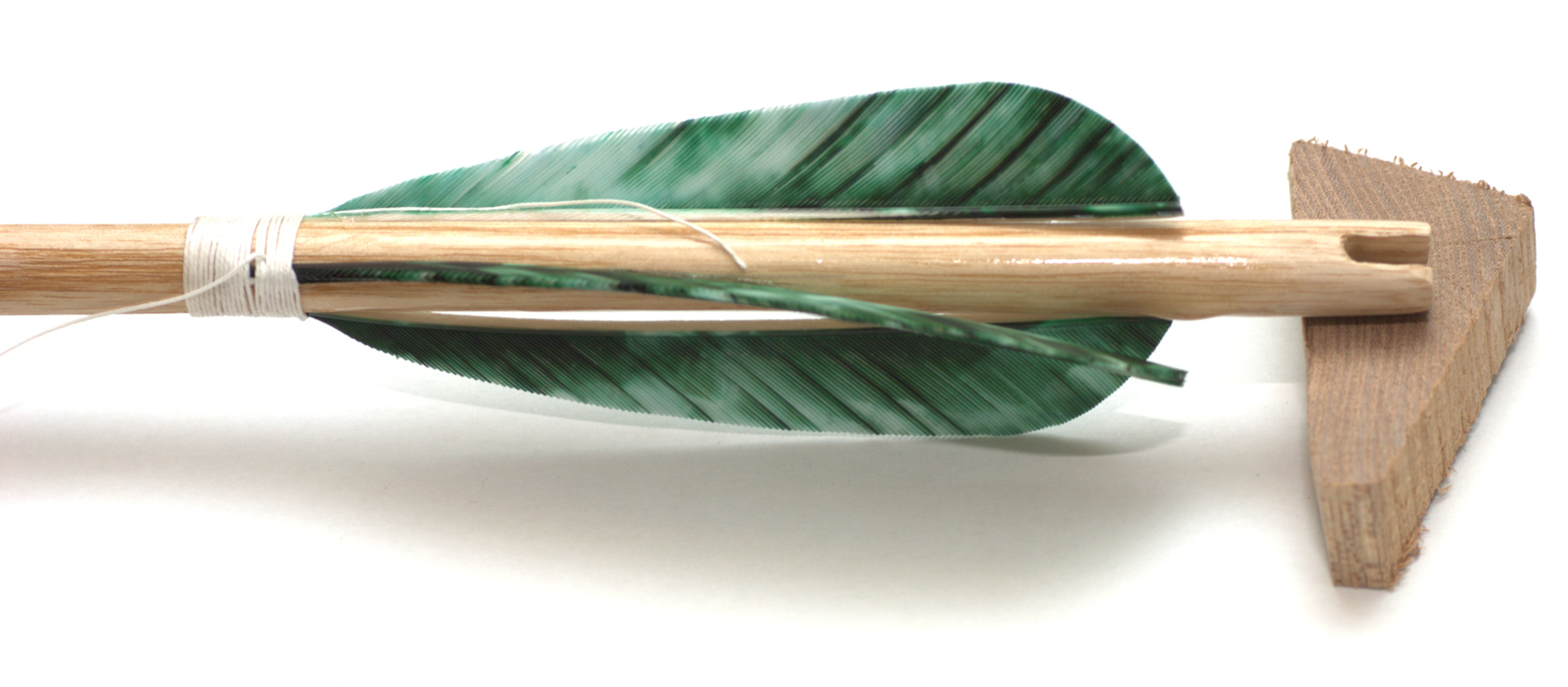 |
Pick down the ends of Vanes at equal lengths. This gives more of a tying area and allows further straighting. |
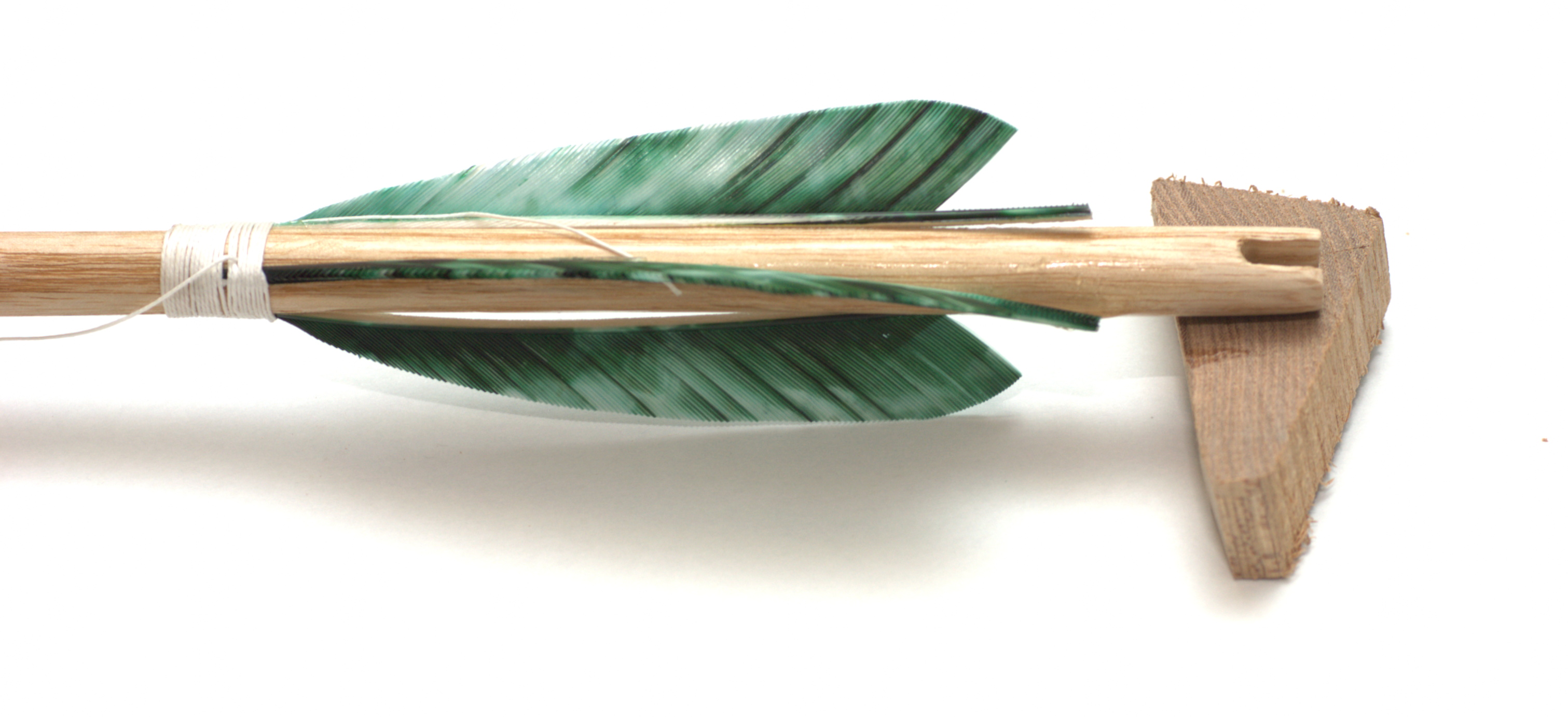 |
| Press vanes back into place and 'tie down' like you did at the front. |
 |
| Completed Fletching. |
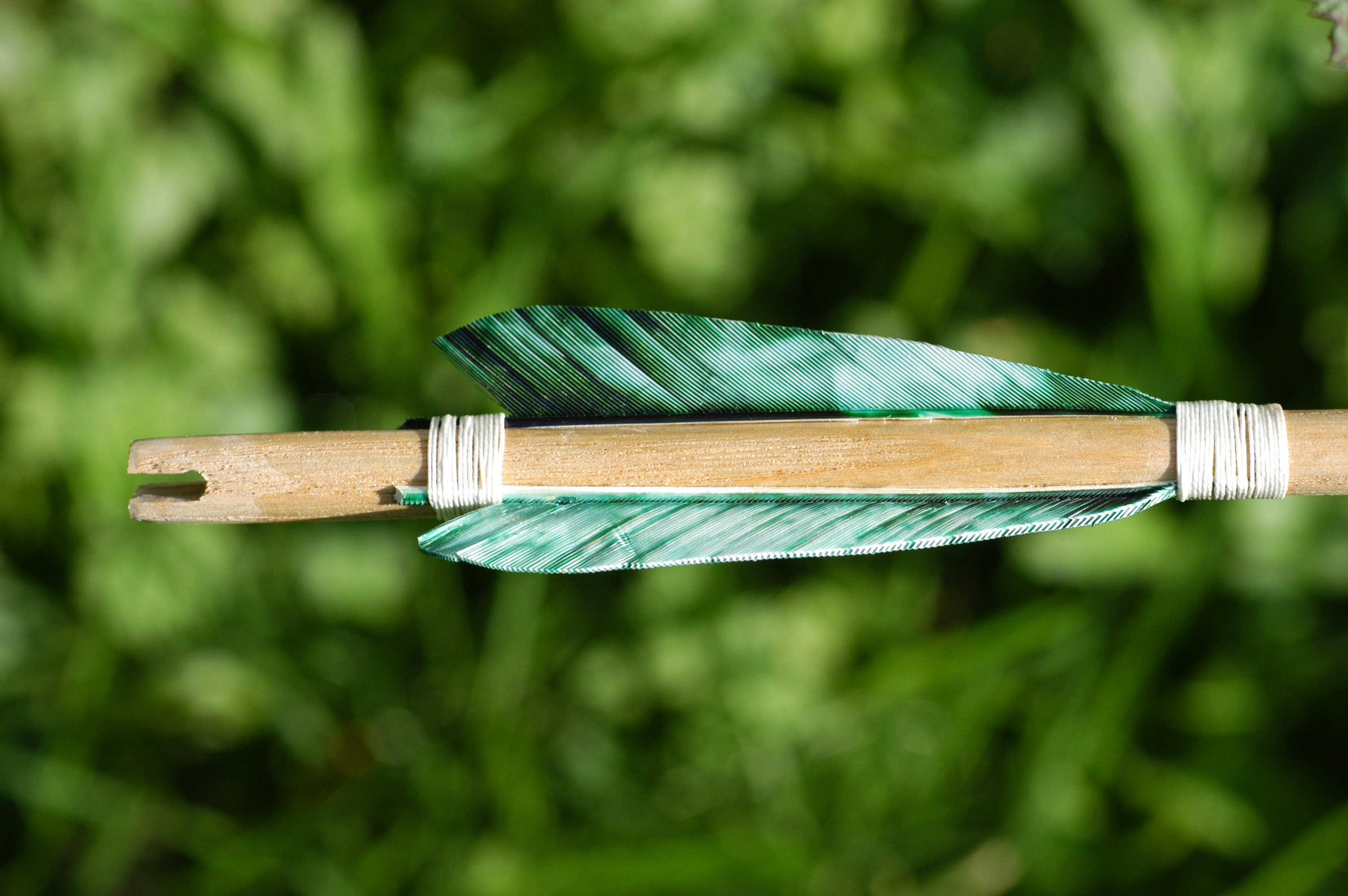 |
| Completed Turkey fletching tied with Sinew. |
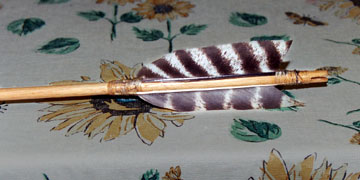 |
